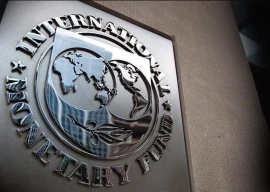
The media recently reported signing of an MoU among five energy companies of Pakistan, mostly PSEs, for pursuing “green hydrogen” opportunities.
Apparently, the step seems quite revolutionary, especially, when the given energy source is yet to secure any sizeable foothold in the energy mix of even the developed world and hydrogen and hydrogen-based fuels hardly account for 0.1% of the total global energy consumption.
This article is a humble attempt at a brief review of the option and its possible relevance to Pakistan.
Definitions
As it does not release any greenhouse gases when burnt, therefore, hydrogen gas is the cleanest fuel for transportation and power generation.
When the source for the electricity used to produce this gas is a fossil fuel, the product is called ‘grey hydrogen’, which currently accounts for 98% of the aggregate annual global production of hydrogen. Generation of each ton of the same releases 11 tonnes of carbon dioxide.
If the process also involves capture and storage of this carbon dioxide,, instead of its release into atmosphere, then the product is called ‘blue hydrogen’. So far, hardly 0.1% of the globally emitted volume of 37.5 billion tons of carbon dioxide is being captured.
As to green hydrogen, it is obtained through electrolysis by splitting water into hydrogen and oxygen by passing electric current through the same. The said current is sourced from renewable sources, ie not involving greenhouse gas emissions at any stage.
Major challenges
The foremost challenge in establishing a viable value chain of green hydrogen is the associated capital and operating costs. The production cost of green hydrogen currently ranges between $3 and $6 per kilogramme while that of grey between $0.5 and $1.7 per kg.
To reduce it to around $1.5/kg, amongst other steps, the pertaining industrial-scale electrolysers’ cost is required to be reduced by four times.
Also; a) In electrolysis, 9 kg of water produces one kg of hydrogen. Hence, arrangement of this water can also be a challenge.
Furthermore, based upon the currently available commercial electrolysis process efficiency, the power requirement for producing 1 kg of hydrogen would at least be 50 kilowatt-hour (kWh). Thus, economical generation of electricity from alternate sources is also pivotal for the given business case.
b) Another major cost adder is the enormous infrastructural cost. For example, hydrogen pipelines can be 10-50% more expensive than those for natural gas while storage tanks can even cost higher.
The factor which plays no mean role in the same is the low energy content by volume of hydrogen. Thus, it takes about 3.3 CF of hydrogen to deliver the same energy as 1 CF of natural gas.
This makes hydrogen’s storage, transportation and especially compression far more cost intensive. Compression alone requires almost thrice the energy to compress the same quantity.
In addition, the associated safety aspects alone should suffice for us to avoid any experimentation along this avenue at this stage.
Hydrogen, having a much wider flammability band than natural gas, is prone to ignite much more easily when mixed even in small amounts with ordinary air, which mandates very stringent safety requirements for associated equipment and operations, both.
Furthermore, in lieu of its around 10 times lesser specific gravity viz-a-viz natural gas, its storage requires very stringent sealing philosophy including specialised cost-intensive sealing materials and leak detection systems, especially when its flames mostly remain undetected with naked eye.
What further complicates the scenario is that exposure of certain materials to hydrogen, such as steel, iron, etc, can cause their embrittlement and failure.
What is to be done
Thus, at present, hydrogen is a luxury which only countries equipped with deep pockets, a rigorous industrial safety regime, proven commitment to environment and a penchant for R&D, can afford.
As to Pakistan, our circular debt in the energy supply chain, T&D losses and abject lack of any strategy for oil and gas reserves’ replacement should be sufficient to define our priorities.
Thus, instead of venturing into any exotic avenues, keen focus on the following seems essential:
1)We are targeting to be producing 60% of our aggregate electricity through renewable sources by 2030. Actually, so far out of the 39,722MW installed capacity, 63% is contributed by fossil fuels. In hydel alone, while the potential is at least 60,000MW, we have reached only 9,000MW over the past 76 years.
As to solar, which is targeted to be 8% of the aggregate be 2030, the currently installed capacity is 430MW. All signs are there that we will miss all the targets even on this conventional front by big margins, which needs immediate intervention.
2)Around 4 tcf of proven low to medium BTU natural gas lies stranded in various fields in Pakistan since long. Efforts need to be undertaken to harness these reserves for economic development.
Various options can be considered for the same including establishing mini-processing and LNG plants and then transporting this gas to industrial outlets through trucking or mixing it with high BTU gas in the grid. Trucking would not only save infrastructural costs but also the enormous T&D losses.
3)Pakistan’s daily requirement of HSD is around 120,000 bpd and the requirement is mostly fulfilled through imports, whereas, based on the availability statistics of edible oil waste, we can extract 20% of our HSD requirement from the same as biodiesel.
4)Our major challenge lies in execution and the associated failure is driven by the lethal mix of two culprits, ie incompetence and poor governance. Its impact on the energy sector can be immediately quantified by the ever-soaring energy imports.
Though PSEs are a living example, with few exceptions, the sickness appears quite rampant in the private sector too.
Probably due to the all-encompassing stranglehold of feudalism and associated ethos, sycophancy, cronyism, mediocrity, subservience and conformance, in various shades, largely appear to be holding sway in this sector too.
Such cultures may occasionally produce task masters, but they mostly fail to produce leaders imbibed with the required entrepreneurial spirit and capacity. If this country has to progress, then, this anomaly needs to be addressed on priority and, of course, in a holistic manner.
Thus, it is evident that the subject option, which may take another few decades even for the developed world to assume the shape of a sustainable value chain, is definitely not an option for us.
The writer is a petroleum engineer and an oil and gas management professional
Published in The Express Tribune, May 8th, 2023.
Like Business on Facebook, follow @TribuneBiz on Twitter to stay informed and join in the conversation.




1725967717-0/Untitled-design-(3)1725967717-0-165x106.webp)













COMMENTS (2)
Comments are moderated and generally will be posted if they are on-topic and not abusive.
For more information, please see our Comments FAQ